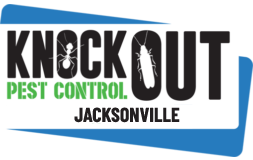All About Termite Swarm Season in Florida
Each spring, as temperatures and humidity both start to rise throughout the state of Florida, termite swarms begin to pop up as well. With the increase in termite swarms comes the increased chance of new building infestations from these wood-dwelling organisms (WDOs). If gone undetected, WDO infestations can destroy a building’s structural components as well as items inside, such as wood furniture and paper products. The longer an infestation goes unnoticed and untreated, the greater the damage it can cause. To best prepare your home or business for swarm season and protect against infestations, it’s important to first understand what happens during the season and why termites can be extremely dangerous.
What is Swarm Season?
Not all types of termites have wings or the ability to fly. However, the term “swarmers” refers to the ones that do. These termites can also reproduce, making them incredibly dangerous to Florida structures as they multiply quickly. Swarm season refers to the period of time when groups of these termites – called swarms – take flight throughout an area searching for a place to breed and build up new colonies. Similar to a flock of birds, the termites fly as one unit as they scout locations. But, what does that ideal location look like? Termites tend to look for warm, dry environments to set up their colonies. This means homes sheltered from the humidity outside are especially appealing.
Termite swarms work quickly and tend to find their next home within 30 minutes to an hour of swarming. Swarms are visible, so homeowners can sometimes see them coming and steer them elsewhere. However, because they swarm quickly, they especially threaten homes and businesses when no one is around to notice them coming or encourage them to swarm elsewhere.
As mentioned, swarm season varies depending on location. Also, the type of termite makes a difference as different termite varieties swarm in different seasons. Florida has one of the highest levels of termite infestations in the United States. Several types of termites swarm each year in the state at different times. However, swarm season for the area generally occurs in spring, when temperatures climb and outside humidity grows as well.
Effects of a Termite Swarm or Infestation
Termites don’t pose a threat to humans in terms of health as they don’t bite or carry diseases. The real threat comes in terms of how their presence throughout a building leads to structural damages. Each year, termites cause billions of dollars in structural damage to homes and businesses, and even more in the costs to repair that damage and prevent infestation growth.
Termites tend to live in a caste system, with the most dangerous caste in terms of structural damage being those that maintain the nest and search for food. During these maintenance and foraging efforts, worker termites travel through and ingest wood. This often means wooden structural components of homes and businesses. As the termites feed away on the wood, the structural integrity of the building deteriorates. When left unnoticed or untreated, this can easily lead to structural collapse over time.
Termites also don’t just rely on building structures for their home and food sources. They are also known to feast on books (or anything made from paper), insulation, drywall, and other plant-made materials. Because of this, termites often cause damage to possessions within a building as well as the building itself.
How to Prepare for Termite Swarm Season
While there is nothing Florida home and business owners can do to prevent termite swarms each spring, there are some proactive steps they can take to protect their structures against extensive damage due to unnoticed termite infestations. Many times, termite swarms are the first indication that a structure has a termite issue. However, waiting for termites to make their presence visible isn’t the best plan of action, because infestations often inhabit a location and grow their colony before making their presence known to the human eye. Scheduling regular termite inspections – at least once a year – is the best way to detect an infestation in its early stages before it has time to create extensive damage that may require costly repairs.
At Knockout Pest Control, we offer termite inspections and treatments for residential and commercial customers throughout Jacksonville. Our trained team of experts brings years of experience in both termite identification and elimination, and we stay up-to-date with industry best practices and technologies to ensure our customers’ homes and businesses are well protected and treated. If during an inspection, the presence of termites is detected, we offer comprehensive treatments that are customized to your situation, based on the type of termite, the building’s structure, and the severity of the infestation.
To eradicate a termite infestation, we have a few options. In some cases, non-repellent liquid termiticides like Termidor™ are used. In others, bait stations or misting systems may be the best approach. It takes a trained eye to accurately diagnose the type of termite infestation and an industry expert to develop and implement a plan for eradication. Because of this, we don’t recommend building owners take on the task of eliminating an infestation on their own.
To best serve our customers, the team at Knockout Pest Control is Termidor™ certified. This allows us to advise on and provide the ideal options for eliminating termite infestations and preventing re-infestations in your home or business. Whether you’ve seen a termite swarm near your property or are looking for peace of mind from an inspection and prevention plan, we would love to help. Contact us today to schedule a termite inspection before they have a chance to wreak havoc on your home!
